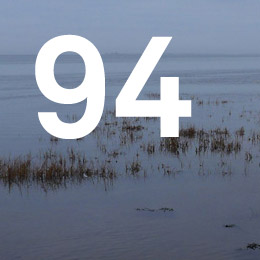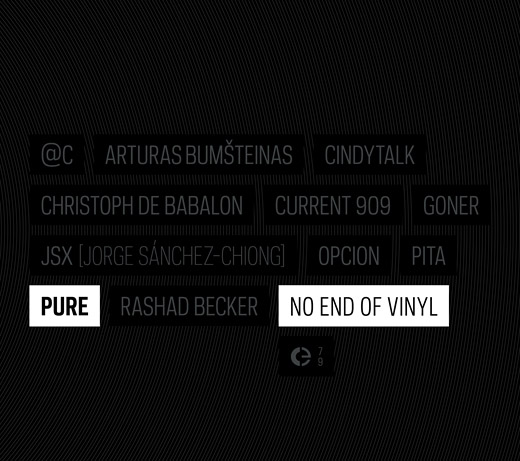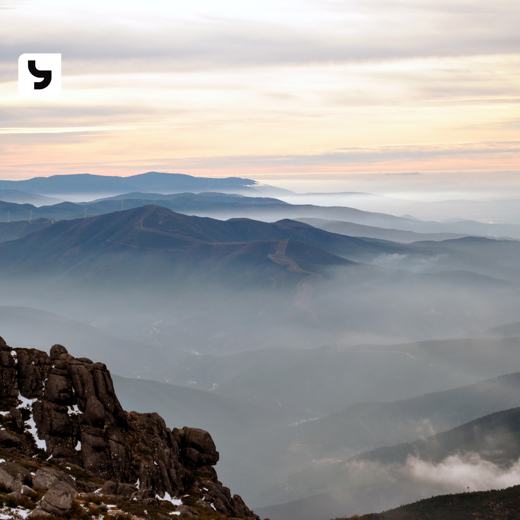
Nacido en 1970 en Darmstadt, el alemán es un artista que ‘trabaja en muchos niveles cerebrales y fÃsicos. Sus trabajos consisten en música electrónica concreta, instalaciones, video y fotografÃa ocasional’. Colaboraciones con, entre otros, Atomâ„¢, Jeremy Bernstein, Ana Carvalho, Bernhard Günter, Nikolaus Heyduck Francisco López, Paulo Raposo y Achim Wollscheid. Más de treinta publicaciones en diversas plataformas, lo más selecto de la música experimental europea –Trente Oiseaux, raster–noton, Entr’acte, Sirr, Auf Afwegen, and/OAR, Antifrost, Crónica–. Todo estos antecedentes son indicativos de hacia donde se dirigen los sonidos creados/ capturados por Marc, un territorio abierto donde las partÃculas de audio fluyen libres sin responder a patrones determinados previamente. Normalmente son minúsculos trozos de ruido propagados por amplios paisajes de electrónica alargada, dilatada en espacios aislados.
“Queendom Maybe Rise†es, hasta la fecha, el cuarto trabajo para el sello portugués, una nueva incursión en los parajes extensos, recostados sobre las arenas limpias, en las costas infinitas de la electrónica pura e inmaculada. El disco solo posee dos piezas, pero en ningún caso es un álbum breve. La primera de ellas alcanza los cuarenta y un minutos de duración. “‘Maybe Rise’ abre con un espacio de sonido concreto de dos elementos contradictorios, primeramente una armónica pero indescriptible locación utópica. Luego, un lugar se acción humana altamente simbólico e hiperrealista, derivado de material grabado en los bosques costeros y las planicies altas del Trópico de Cáncer en Queensland, Australia, en julio de 2011, compuesta en la primavera de 2012 mientras viajaba constantemente y estrenada en mayo 2 de 2012â€. De inmediato, una vez abierto el CD, empieza a sonar un ligero estruendo, un tendido de electricidad comienza a levantarse por encima del suelo y la humedad tropical. Es posible escuchar como se incrustan los fragmentos microscópicos entre medio de esta red energética. Progresivamente, a medida que transcurren pocos minutos, avanza ese estruendo ligero hacia una contundencia mucho mayor. De pronto, esa suavidad disfrazada se convierte en un cuerpo compacto y estrepitoso. Pareciera que no distinguiera notas ni melodÃas, sin embargo, oculta en esa masa hay una alteración en la música. Pero resulta casi sin pretenderlo ni buscarlo, como surgiendo espontáneamente producto del choque de sonidos, de la colisión de cargas, más o menos como estar situado en el centro de una tormenta en medio de las nubes. Más tarde, un quiebre brusco del ritmo, una rotura en la continuidad. Esos quiebres se presentan de vez en cuando, sin llegar a alterar en demasÃa la lÃnea que une un extremo con el otro. Son ataques repentinos de fuerza sonora impulsados contra lo que se les enfrenta, modificando el peso y la altitud de la pieza. Todo esto acontece hasta el minuto veinticinco. De ahà en adelante es que comenzarán a oÃrse la vida salvaje, el ruido tropical. Animales insertos entre bajos profundos, aves cantando junto con el rumor acústico, finalmente aquietados por la lluvia y el calor. “‘Queendom’ fue grabada y producida para la ceremonia inaugural de un Consulado del Reino de Elgaland–Vargaland en el pueblo de Karben, Alemania, en abril 11 de 2009. La pieza presenta a la poderosa Yôko Higashi (hamaYôko) en voces, que insinúa un conocimiento de fuerzas sobrenaturales. Todos los sonidos fueron generados con la voz de Yôkoâ€. Ocho minutos en las entrañas de la artista japonesa. El alemán es uno de los distinguidos ciudadanos del reino (digital) de KREV, además de uno de sus ministros. Y en una de sus ceremonias es que se reunió con Yôko, en una pieza que muestra el enorme potencial que emerge de las cuerdas vocales humanas. Al igual que en el track anterior, las planicies sonoras se recuestan plácidas por momentos, para más tarde desestructurar la armonÃa reinante por medio de ráfagas y estruendos que van cortando el aire, resquebrajando la atmósfera. De la tranquilidad a la distorsión, del silencio, de la quietud a la explosión comprimida, Yôko expulsa los sonidos más insospechados desde su interior, mientras Marc los manipula obteniendo una grácil obra de musique concrète. Tomando como punto de partida esos registros, Behrens los tritura y luego los esparce, los estira más allá de sus bordes, extirpa ciertos elementos para pegarlos a otros diferentes. Hay una interacción constante de cuerpos, friccionando entre si, al mismo tiempo que un tejido vivo, una substancia viva se reproduce por debajo de ese otro ente viviente que es hamaYôko. Las pulsaciones, los nervios se mueven incansablemente, la respiración se siente expandiéndose en el oÃdo. Respiración, exhalación, descanso, explosión. Cables de carne trenzándose con arterias sintéticas, fibra óptica atravesando canales vivos. Un coro de una sola persona tratada por magia digitalizada, cortando y pegando trozos, reteniendo la estática, restallando en pequeños golpes extáticos.
El ciudadano alemán deconstruye el sonido desde su raÃz más Ãnfima y, como un insecto inquieto y laborioso, permanentemente interviniendo, sin descanso. Y, aún asÃ, se puede descansar sobre sus amplitudes acústicas, y dejarse abordar por la limpieza de su ruido prÃstino y salvaje.
via Hawái








